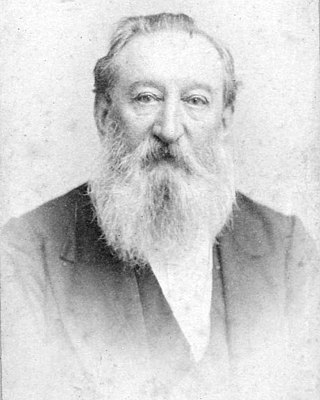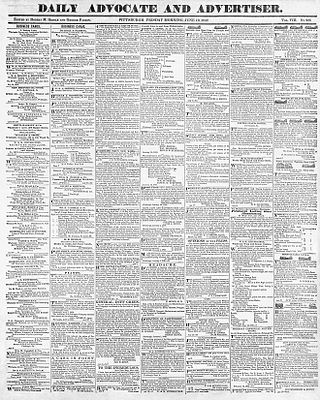Related Research Articles

Captain William Hobson was a British Royal Navy officer who served as the first Governor of New Zealand. He was a co-author of the Treaty of Waitangi.

The New Zealand Company, chartered in the United Kingdom, was a company that existed in the first half of the 19th century on a business model focused on the systematic colonisation of New Zealand. The company was formed to carry out the principles devised by Edward Gibbon Wakefield, who envisaged the creation of a new-model English society in the southern hemisphere. Under Wakefield's model, the colony would attract capitalists who would then have a ready supply of labour—migrant labourers who could not initially afford to be property owners, but who would have the expectation of one-day buying land with their savings.

Matiu / Somes Island is the largest of three islands in the northern half of Wellington Harbour, New Zealand. The island is 24.9 hectares in area, and lies 3 kilometres south of the suburb of Petone and the mouth of the Hutt River.
Samuel Revans was a New Zealand newspaper owner, entrepreneur and politician. He was the Father of Journalism in New Zealand.

George Hunter, JP was the first mayor of Wellington, New Zealand, in 1842–43. He was also the first mayor in New Zealand.

William Guyton JP (1816–1884) was the second Mayor of Wellington, New Zealand in 1843. He obtained this position upon the death of George Hunter and held until the Borough was abolished by the British Government.
The following lists events that happened during 1844 in New Zealand.
1840 is considered a watershed year in the history of New Zealand: The Treaty of Waitangi is signed, British sovereignty over New Zealand is proclaimed, organised European settlement begins, and Auckland and Wellington are both founded.

The New Zealand Gazette, commonly referred to as Gazette, is the official newspaper of record of the New Zealand Government. Published since 1840, it is the longest-running publication in New Zealand. Since 26 October 2017, it has been published online continuously. Special editions are also published twice a year to cover the New Year Honours and King's Birthday Honours.
Blenheim was built in 1834 at Jarrow, England. She made three voyages transporting convicts to Australia. She also carried emigrants to New Zealand. She otherwise carried ordinary valuable cargo and in one of such voyages came across what has since been named Blenheim Reef, in the Indian Ocean. She disappeared without a trace, presumed foundered, after August 1846.
Robert Stokes practised briefly as an architect in England in the 1830s before emigrating to New Zealand, where he had a varied career as a land surveyor, a newspaper proprietor and latterly as a member of the New Zealand Legislative Council. The Lower Hutt suburb of Stokes Valley in New Zealand commemorates his name.
Henry Joseph Coote, known as Major Coote, was a British army officer who served in India, Corfu and New Zealand and returned to breed sheep in New Zealand on his retirement from the army. He was a member of the New Zealand Legislative Council from 8 July 1865 until his death in his 49th year on 25 March 1867.
Whitby was a three-masted, square-rigger launched in 1837 and later re-rigged as a barque. She was registered in London, and made voyages to India, British Guiana, Australia, and New Zealand. In 1841 Whitby, Arrow, and Will Watch carried surveyors and labourers for the New Zealand Company to prepare plots for the first settlers. Whitby was wrecked at Kaipara Harbour in April 1853.

The Advocate was a newspaper published in Pittsburgh, Pennsylvania, under several title variants from 1832 to 1844. It was the second daily newspaper issued in the city, the first being its eventual purchaser, the Gazette. Politically, the paper supported the principles of the Whig Party.
The Bruce by-election 1862 was a by-election held in the multi-member Bruce electorate during the 3rd New Zealand Parliament, on 31 July 1862. The by-election was caused by the death of incumbent MP Charles Kettle on 5 June, and was won by Edward Cargill.
Henry Tucker was a Royal Navy officer and the first colonial storekeeper for the newly established Colony of New Zealand.

The New Zealand Company was a 19th-century English company that played a key role in the colonisation of New Zealand. The company was formed to carry out the principles of systematic colonisation devised by Edward Gibbon Wakefield, who envisaged the creation of a new-model English society in the southern hemisphere. Under Wakefield's model, the colony would attract capitalists who would then have a ready supply of labour—migrant labourers who could not initially afford to be property owners, but who would have the expectation of one day buying land with their savings.
Alfred Maurice Hollings was a New Zealand lawyer and cricketer. He played in seven first-class cricket matches for Wellington from 1926 to 1930.
Tyne was built in Sunderland and launched in 1841. She made two complete voyages to New Zealand, carrying immigrants on behalf of the New Zealand Company. She was wrecked in July 1845 on her third such voyage.
References
- ↑ "The New Zealand Gazette and Britannia Spectactor". New Zealand Gazette. Retrieved 1 July 2022– via PapersPast.
- ↑ "The New Zealand Gazette and Wellington Spectactor". New Zealand Gazette. Retrieved 1 July 2022– via PapersPast.
- ↑ "The New Zealand Gazette and Wellington Spectactor". New Zealand Gazette. Retrieved 1 July 2022– via PapersPast.